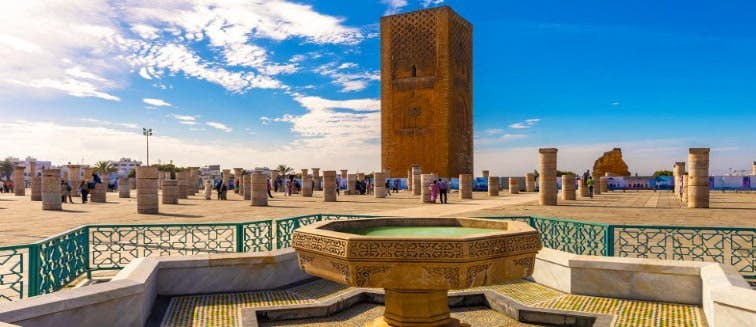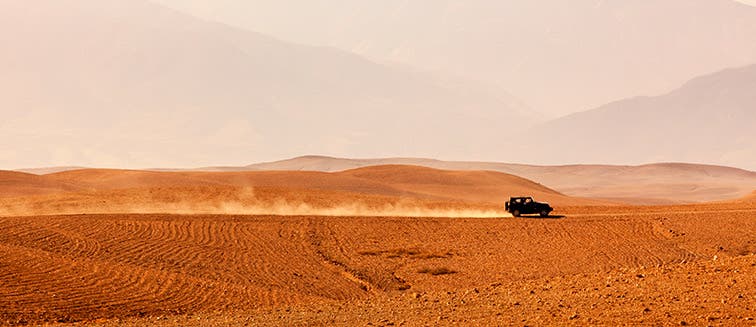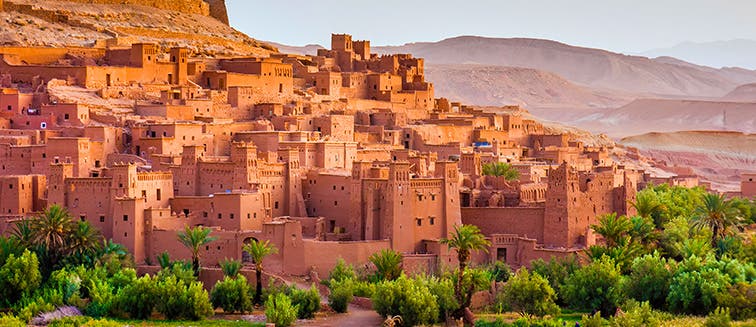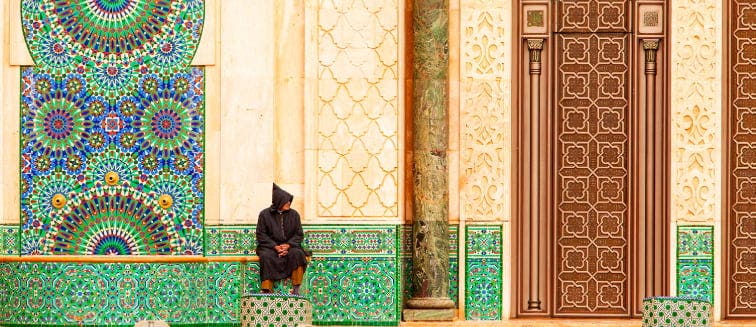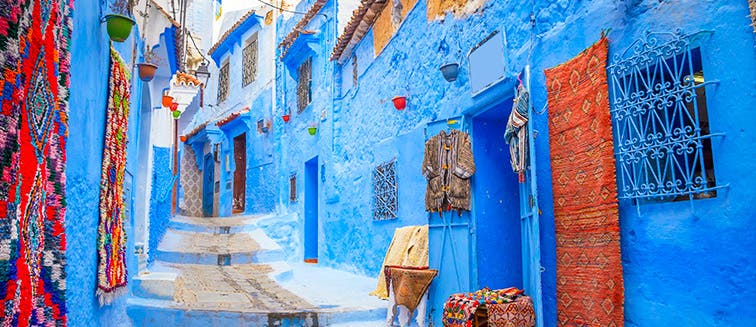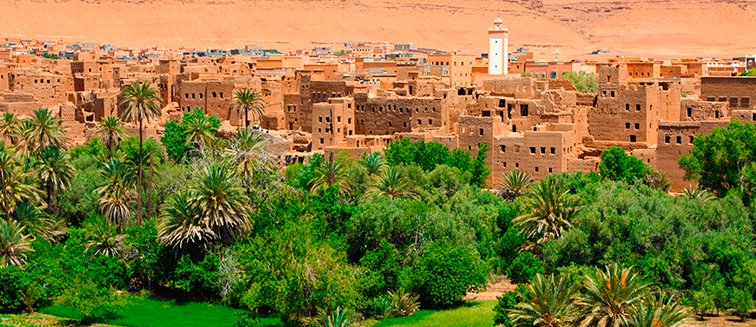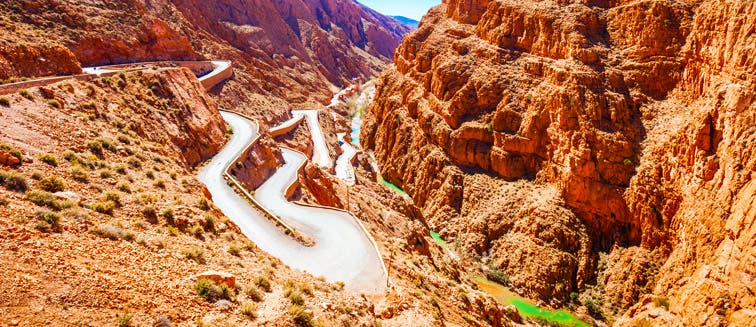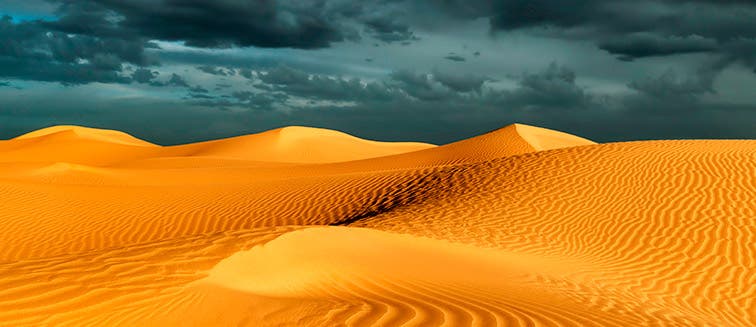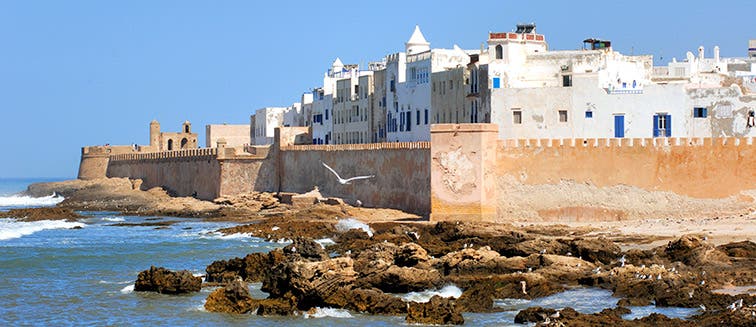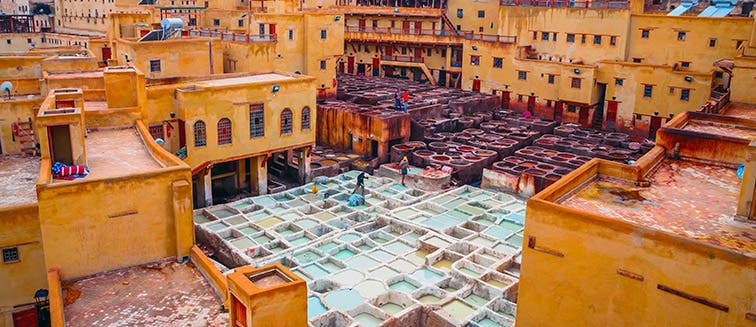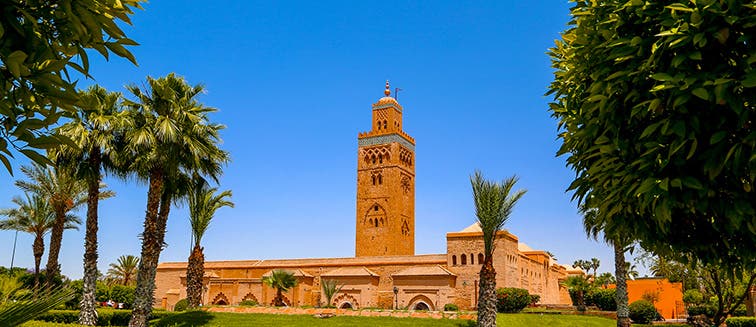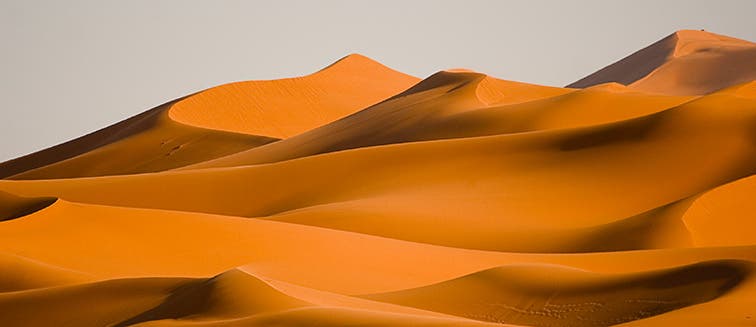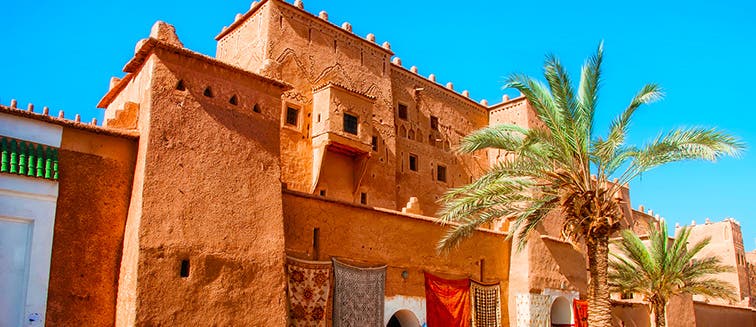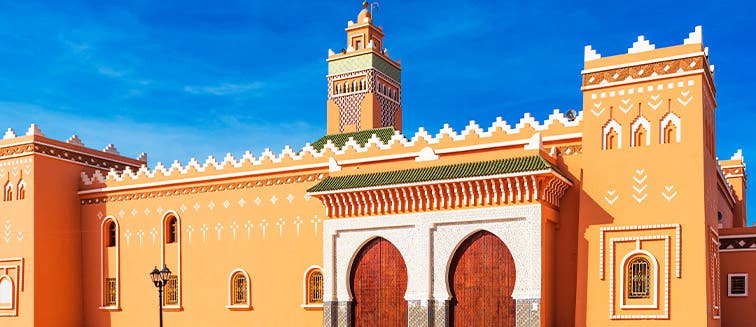Africa
Americas
Asia
Europe
Oceania
Holidays to Europe (93 available)
Albania(2)
Austria(6)
Baltic States(3)
Belgium(5)
Croatia(3)
Cyprus(1)
Czech Republic(5)
Denmark(1)
England(10)
Finland(2)
France(13)
Germany(7)
Greece(10)
Holland(5)
Hungary(4)
Iceland(6)
Ireland(9)
Italy(13)
Montenegro(1)
Northern Ireland(2)
Norway(9)
Portugal(9)
Romania(1)
Scotland(6)
Slovakia(1)
Spain(9)
Sweden(2)
Switzerland(4)
By Season
By Interest
By Group
What to see in Morocco
Rabat
Tourist attractions Rabat
One of four imperial cities in Morocco, the fortified city of Rabat serves as both the country’s capital and a popular beach destination, known for its long stretches of sandy Atlantic coastline. Rabat literally means ‘fortified place’, which is easily explainable with one look at the city’s oldest part, the kasbah, which is encased within red walls. Rabat was once a thriving North African port, notoriously frequented by Barbary pirates from the 16th to 18th centuries, who were known for seizing ships in the western Mediterranean.
The city’s history and landmarks represent elements of both Islamic and French influence, owing to the French protectorate in Morocco during the first half of the 20th century. Majestic Rabat is home to a UNESCO World Heritage Medina, alongside affluent, modern neighbourhoods complete with skyscrapers and sleek architecture. With its privileged coastal location, Rabat is a popular holiday destination for both Moroccan’s and foreigners alike. Long, sandy stretches of beach contrast against the imposing walls of the kasbah in the background, creating a unique cityscape.
Rabat also boasts a more laid-back atmosphere than a number of other popular Moroccan cities, with the winding streets of its medina largely unaffected by the impacts of tourism, so you can really appreciate the mix of history and modernity that the city has to offer. The public transport consists of a tram line, which has an impressively frequent service, and the iconic petit taxis; light blue in colour.
What to see in Rabat
Thanks to its long history and strategic location, there is certainly enough sights to quench your thirst for culture on a tour of Rabat. The unmissable Hassan Tower is a good place to begin, as it stands out in the city’s skyline, close to the banks of the Bou Regreg River.
Its red sandstone minaret is part of an unfinished mosque, whose construction was abandoned in the 12th century, with the death of its commissioner Abu Yusef Yaqub al-Mansur of the Almohad Caliphate. Once finished, the mosque was expected to be the largest in the world. As well as the well-preserved Hassan Tower, there are still remnants of the old walls of the mosque and ruined stone columns.
For more sandstone architecture, head to the impressive Kasbah of the Udayas, overlooking the mouth of the river and out to sea. This old walled-city fortress is even more impressive inside, where it is peppered with picture-postcard pretty white and blue buildings, beautiful murals and intricately decorated doors. The Mausoleum of Mohammed V is another unmissable stop for an insight into the heady days of the resplendent caliphate, where it is almost impossible to resist the allure of the highly decorative mosaic, gold and marble work on display inside this royal family tomb.
Delve back even further into the history of Rabat at the Chellah; the majestic ruins of a medieval fortified necropolis, complete with authentic castle walls. Its history stretches back to the Phoenicians and Romans, with Roman walls still extant on the site. If you’d rather look forward than back in time, Rabat’s modern art museum is housed in a beautiful building, open since 2014, with a collection composed of the works of 200 Moroccan artists.
OUR BEST TRIPS TO RABAT
YOU ALSO LIKE
Egypt
13 Trips
Morocco
7 Trips
Tunisia
5 Trips
South Africa
14 Trips
Namibia
4 Trips
Zimbabwe
7 Trips
Botswana
2 Trips
Eswatini
2 Trips
Kenya
12 Trips
Tanzania
8 Trips
Ethiopia
1 Trips
Uganda
4 Trips
Mozambique
1 Trips
Senegal
Notify me when available
Rwanda
1 Trips
Mauritius
2 Trips
Madagascar
1 Trips
Seychelles
Notify me when available
Reunión
Notify me when available
Tourist attractions morocco
Points of interests
- Trips to Agafay Desert
- Trips to Ait Ben Haddou
- Trips to Casablanca
- Trips to Chefchaouen
- Trips to Dadès Gorges
- Trips to Dadès Valley
- Trips to Erg Lihoudi Dunes
- Trips to Fes
- Trips to Marrakech
- Trips to Merzouga
- Trips to Ouarzazate
- Trips to Rabat
- Trips to Zagora
Other Points of interests
- Trips to Al-Fayoum
- Trips to Alexandria
- Trips to Aswan
- Trips to Bahariya Oasis
- Trips to Cairo
- Trips to Carthage
- Trips to Desierto del Sahara
- Trips to Douz
- Trips to El Djem
- Trips to Esna
- Trips to Giza
- Trips to Hurghada
- Trips to Kairouan
- Trips to Kom Ombo
- Trips to Luxor
- Trips to Matmata
- Trips to Nefta
- Trips to Nile River
- Trips to Nubia
- Trips to Port Said
- Trips to Red Sea
- Trips to Saqqara
- Trips to Sbeitla
- Trips to Sfax
- Trips to Sidi Bou Said
- Trips to Siwa Oasis
- Trips to Sousse
- Trips to Tozeur
- Trips to Tunis
- Trips to Wadi-Haitan
- Trips to White Desert
Countries Nearby
- Botswana Trips
- Egypt Trips
- Eswatini Trips
- Ethiopia Trips
- Kenya Trips
- Madagascar Trips
- Mauritius Trips
- Morocco Trips
- Mozambique Trips
- Namibia Trips
- Reunión Trips
- Rwanda Trips
- Senegal Trips
- Seychelles Trips
- South Africa Trips
- Tanzania Trips
- Tunisia Trips
- Uganda Trips
- Zimbabwe Trips
Trip Styles
- Egypt Cultural Tour Packages Trips
- Family Egypt Trips
- Egypt Nature Vacation Packages Trips
- Kenya Safari Tours Trips
- Family Kenya Trips
- Kenya Nature Tours Trips
- Discover Morocco Culture Tours Trips
- South Africa Cultural Tours Trips
- South Africa Safari Tours Trips
- Tanzania Safari Tours Trips
- Uganda Safari Tours Trips
Susbscribe to our newsletter and join Exoticca GO
The best travel deals
Exclusive promotions
Expert travel tips
